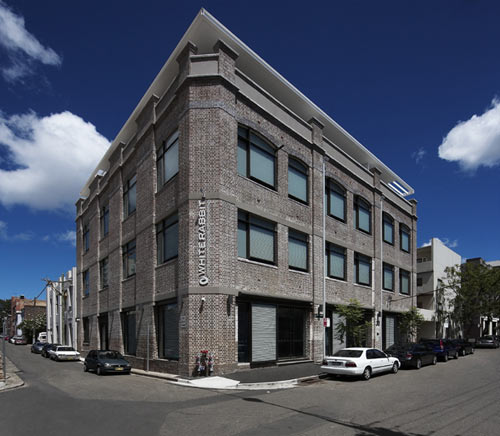Life and Leisure
Gallery and guide deepen Sino-Aussie artistic connections
By Stuart Beaton (China Daily)
Updated: 2010-10-01 08:10
 |
Large Medium Small |
|
 The White Rabbit Gallery in Sydney has one of the world's largest collections of Chinese art work created after 2000. [Provided to China Daily] |
A newly re-opened art gallery in Sydney focusing on contemporary Chinese art and a bilingual introduction to Australia's prominent fine art institutions and works will help deepen ties in the art scenes of China and Australia.
The White Rabbit Gallery in Sydney has one of the world's largest and most significant collections of contemporary Chinese art. Founded by Kerr and Judith Neilson, it focuses on works after 2000.
Their latest collection, The Big Bang, celebrates the explosion of creativity that has rocked China since its reform and opening-up.
"Contemporary artists went into freestyle dance mode, applying their superb technical training to a dizzying array of new subjects, styles and media," says Paris Neilson, manager and curator of the gallery.
"For the youngest generations - wired and Web-smart products of the family planning policy - artistic movements and political dogmas are pass. If their works share a common theme, it is change. And if they have a common perspective, it is zi wo, or 'I myself'. "
The Big Bang surveys this artistic supernova through the work of 35 extraordinarily diverse artists, and features a 500 kg pile of porcelain sunflower seeds, individually painted by hand, an endlessly expandable Slinky-man, made entirely of paper, and Chinese artist Wang Zhiyuan's Thrown to the Wind, a three-story tower of plastic containers that spirals towards the roof of the gallery
The origins of the White Rabbit collection go back to the late 1990s, when Judith Neilson engaged Wang Zhiyuan, then living in Sydney, as her art tutor. He introduced her to the astonishing explosion of creativity taking place in China in the wake of the economic reforms that began in 1979.
Neilson began buying works, but soon ran out of space to hang them. She and her husband then decided to open a gallery that would make the exciting world of contemporary Chinese art available to all Australians.
The White Rabbit Gallery, a converted knitting factory near Sydney's Central Station, has four floors of exhibition space as well as a theater, a library and a teahouse. Only a fraction of the collection is on show, but the entire contents of the gallery are re-hung twice a year.
Meanwhile, Chinese art collectors can also obtain a better understanding of Australian art as A Guide to Australian Art and Galleries, in both Chinese and English, was launched at a gala dinner in the Australian Pavilion at the Shanghai Expo last month. Australian art luminaries, Shanghai art scene regulars and cultural figures and dozens of high-end art collectors attended the lavish function to celebrate the production of the visually stunning coffee table book.
"A country's art has the potential to reveal the soul of a people, and I hope that this publication can foster a greater understanding of Australia and deepen the already strong exchanges between our two countries," says Lyndall Sachs, commissioner general for Australia.
The joint production of the Shanghai International Culture Association and the Australian Consulate General in Shanghai Commercial Section includes an overview of the history of Australian art and sections on public and commercial art galleries.
Twenty-three member galleries of the Australian Commercial Art Galleries Association are profiled in the Guide, as well as seven public galleries.
The Guide showcases each gallery's unique aspects and gives details of collections, as well as past and upcoming major exhibitions. There are even maps and floor plans to help visitors chart out their visits in advance.
Australian art is as wide-ranging and diverse as the multi-cultural mix of its population, and the Guide is extensively illustrated with examples of these works.
Indigenous artworks, celebrating a culture thousands of years old, rub shoulders with the latest in multi-media installations, while Colonial-era art sits close to iconic Pop Art pieces.
In his introduction to the Guide , Zhu Junbo, deputy chairman of the China Periodical Association, writes: "Art has always been an essential element and lubricant for communication between nations and countries. People are as eager for art as sunlight, air and water in this era of globalization."
For more information, go to http://www.whiterabbitcollection.org. A Guide to Australian Art and Galleries is available at Xinhua stores across the country.